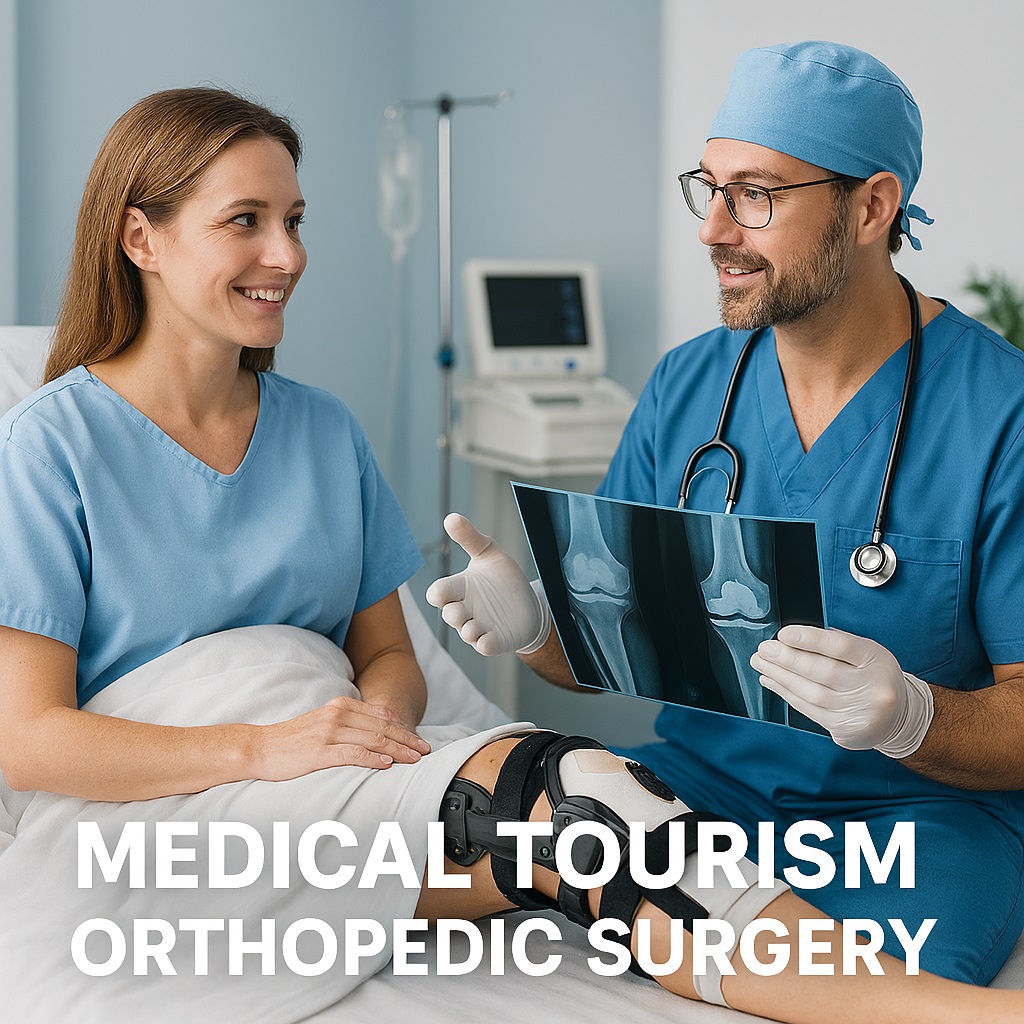Orthopedic Medical Tourism: Your Guide to Affordable & Quality Surgery Abroad
Are you struggling with long wait times or high costs for orthopedic surgery in your home country? **Orthopedic medical tourism** offers a compelling solution, allowing you to access top-tier care at a fraction of the cost. This comprehensive guide will walk you through the process, from understanding the benefits to choosing the right destination, including a look at why countries like Iran are becoming a go-to for many patients.
Medical tourism for orthopedic surgery is on the rise globally. It’s a trend fueled by the increasing cost of healthcare, prohibitive insurance premiums, and long waiting lists in many Western nations. Patients are no longer limited to their local hospitals; instead, they are looking abroad for high-quality, specialized care. This is particularly true for complex procedures like joint replacements and spinal surgeries. As a matter of fact, the medical tourism industry has burgeoned in recent decades, with an estimated 30 to 50 million people traveling overseas for treatment each year. The pursuit of both superior medical outcomes and significant financial savings is a powerful motivator.
Why Choose Orthopedic Medical Tourism?
The primary driver for most medical tourists is, without a doubt, cost. Procedures that can cost upwards of $50,000 in the U.S. might be available for less than a quarter of that price in other countries, even after factoring in travel and accommodation. But the benefits extend far beyond just savings. Many international hospitals offer advanced medical technology, including robotic-assisted and minimally invasive surgery, which can lead to faster recovery and less pain. Furthermore, you can often bypass the long wait times common in public healthcare systems, allowing you to receive timely treatment and get back to a pain-free life sooner. The all-inclusive packages offered by many providers simplify the entire process, covering surgeon fees, hospital stays, and even post-operative care.
Major Benefits: A Closer Look
In addition to the financial and time-saving advantages, there’s the quality of care. Many popular medical tourism destinations have hospitals that are accredited by international bodies like the Joint Commission International (JCI), which assures that they meet rigorous global standards of safety and quality. Also, patients often report a more personalized and attentive level of care. Doctors and staff in these facilities are accustomed to working with international patients, and many are bilingual. This focus on the patient experience, combined with access to leading surgeons and state-of-the-art facilities, makes the prospect of traveling abroad for surgery highly appealing. The entire process, from consultation to recovery, is often streamlined and focused on your comfort.
Potential Risks and How to Mitigate Them
While the benefits are clear, it’s crucial to be aware of the potential risks involved in any medical procedure, especially one undertaken in a foreign country. One of the most significant concerns is the potential for a lack of continuity of care. It can be challenging to find a doctor in your home country willing to manage complications from a surgery performed abroad. Furthermore, there are risks of infection, legal recourse challenges, and communication barriers if you are not fluent in the local language. To counter these risks, meticulous planning and research are essential.
To reduce risk, be sure to:
- Choose hospitals with internationally recognized accreditations like JCI or Global Healthcare Accreditation (GHA).
- Request a detailed, itemized quote to avoid hidden costs.
- Communicate your specific needs clearly with the medical team.
- Arrange for follow-up care with a local physician before your departure.
- Discuss a post-operative care and rehabilitation plan.
By taking these steps, you can significantly reduce the potential for complications and ensure a smoother recovery. Always prioritize quality and safety over just finding the lowest price. For more information about our orthopedic surgery department and its services, check out our dedicated page.
Top Destinations for Orthopedic Surgery in Medical Tourism
Several countries have established themselves as leaders in orthopedic medical tourism. They offer a winning combination of affordability, world-class facilities, and experienced surgeons. India, for example, is renowned for its low-cost but high-quality joint replacement surgeries and uses advanced technology like 3D-printed implants. Turkey has become popular for its all-inclusive packages and high-tech hospitals, while Mexico is a top choice for North American patients due to its proximity and significant cost savings. However, a new player is emerging as a top destination, offering a unique blend of expertise, affordability, and a rich cultural experience. This rising star is Iran.
A Comparison Table of Leading Destinations
To help you compare, here is a table highlighting some of the key factors to consider when choosing a destination for your orthopedic surgery. As you can see, Iran provides a compelling option for those seeking high-quality and affordable care.
| Feature | Iran | India | Turkey | Mexico |
|---|---|---|---|---|
| Average Cost (Knee/Hip Replacement) | **$4,000 – $8,000** | $6,000 – $10,000 | $7,000 – $10,000 | $9,500 – $15,000 |
| Expertise & Technology | Highly skilled surgeons, advanced hospitals. | World-class surgeons, 3D printing, robotic surgery. | High-tech medical facilities. | Robotic-assisted procedures, skilled surgeons. |
| Accreditation | International standards, reputable. | JCI, NABL, NABH. | JCI accredited hospitals. | JCI accredited hospitals. |
| Travel & Recovery | Easy access, rich culture, serene environment. | Wellness retreats, cultural experiences. | Beautiful coastlines, historical sites. | Proximity to North America, tourist-friendly. |
How to Plan Your Orthopedic Medical Tourism Journey
Planning for orthopedic surgery abroad requires careful consideration to ensure a successful and smooth experience. Here is a step-by-step guide to help you navigate the process with confidence.
Your Step-by-Step Guide to Medical Tourism for Orthopedic Surgery
Following these steps will ensure you are well-prepared for your trip and treatment.
Step 1: Research and Consultation
Start by researching potential destinations and hospitals that specialize in your required orthopedic procedure. Look for hospitals with international accreditations like JCI. You should then contact a few facilities to request a remote consultation. Provide them with your medical history and imaging results (X-rays, MRIs). This will allow the surgical team to assess your condition and provide a personalized treatment plan and cost estimate.
Step 2: Financial and Travel Planning
Once you’ve chosen a hospital and surgeon, get a detailed, transparent price quote. This quote should include all costs, from the surgery itself to pre-operative tests, anesthesia, implants, hospital stay, and post-operative care. Arrange your travel and accommodation, making sure to consider the length of your stay, which will include recovery time. Purchase a travel insurance policy that specifically covers medical complications abroad.
Step 3: Pre-operative Preparations and Travel
Before you travel, follow all pre-operative instructions from your surgeon. For instance, you may need to stop taking certain medications. Pack all necessary documents, including your medical records, passport, and visa (if required). When you arrive at your destination, a hospital representative or facilitator will often meet you and assist with logistics. You can find more information about our contact and preparation guides on our contact page.
Step 4: Surgery and Recovery
The day of the surgery will be focused on your procedure and immediate post-operative care. After the surgery, you will begin your recovery and rehabilitation, which is a critical part of the process. Follow your physical therapy regimen diligently, as it will determine the success of your recovery. Most facilities will provide a dedicated care team and a physical therapist to guide you through this phase.
Step 5: Post-Trip Care
Before you fly home, your surgeon will give you detailed instructions for your continued recovery. It is also wise to have a local physician or physiotherapist lined up for follow-up care. Keep all your medical records and contact information for your surgical team abroad in case you have questions or concerns. Your journey to a healthier, more active life continues at home.
Patient Success Stories and What They Mean For You
Real-life stories are powerful indicators of the quality and success of medical tourism. Many patients share testimonials about their experiences, which can provide invaluable insight. For example, some people have reported being “pain-free for the first time in years” after a knee replacement abroad, highlighting the life-changing impact of timely, high-quality care. Others are astounded by the professionalism of the staff and the seamless, “one-stop-shop” approach to their care. The confidence and peace of mind that comes from a successful procedure, without the added financial strain, is a recurring theme in these stories. These accounts show that the decision to travel for surgery can truly lead to a new lease on life, enabling patients to return to activities they had long given up on. To read about the experiences of others, you might want to visit patient review websites or search for testimonials on hospital websites. For examples of medical professionals, you can view our directory of doctors.
Final Considerations and Call to Action
The landscape of orthopedic care is changing, and medical tourism is at the forefront of this evolution. For millions, it represents an opportunity to regain mobility and quality of life without facing insurmountable financial burdens. From initial research to post-operative rehabilitation, a well-planned journey can lead to a successful outcome. The combination of expert medical care, significant cost savings, and the possibility of a rewarding travel experience makes it an increasingly popular choice. We invite you to explore your options and take the first step towards a pain-free future. Contact Wmedtour.com today to learn how we can help you with your orthopedic surgery journey.




